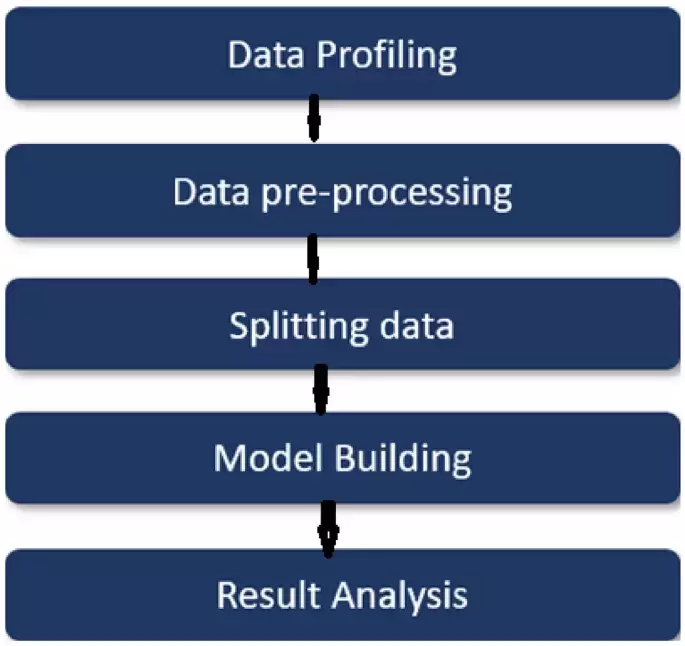 |
|
 |
|
 |
|
 |
|
 |
|
 |
|
 |
|
 |
|
 |
|
 |
|
 |
|
 |
|
 |
|
 |
|
 |
|
Cryptocurrency News Articles
A Graph-Based Deep Learning Model for Detecting Illicit Transactions During Bitcoin Transactions
Apr 01, 2025 at 04:16 pm
Identifying and preventing the illegal transactions during bitcoin transactions are challenging problems in the private financial market.

Cryptocurrency has become increasingly used these days. It is a digital currency, i.e. the encrypted data strings which only exist electronically. They are not decentralized; in other words, they are not issued by the government. Cryptography algorithms are used to create cryptocurrency and they are validated through mining1. If the miners are successful, they will receive cryptocurrency as a reward2,3,4. These electronic currencies are stored in a structure and it is called blockchain. Blockchain gives information with node details in a distributed environment. The information cannot be edited or ruined. Transactions occur in blocks of data, and each block has a pointer to the previous block. The arrival of Bitcoin has triggered the popularity of cryptocurrency5. However, this recurring use of cryptocurrency has captured the attention of many scammers. Cryptocurrency scams occur through many means; ransomware attack, financial crimes, Ponzi schemes, etc. However, cryptocurrency is a small network that provides anonymity to its users. Scammers take advantage of this and use this facility to camouflage themselves.
Bitcoin
Bitcoin is one of the first cryptocurrency. It works by using blockchain and is more valuable than others. The bitcoin blockchain can be viewed as a shared ledger in which every transaction is recorded and cannot be changed. Each block has a unique hash pointer which points to the previous block. These points are the links between each block. Nodes in the network would validate the new transaction and is added to the ledger or the blockchain which is then published to the rest of the nodes. When mining is done to create new bitcoin, the miner gets the unique hash value of the new coin using algorithms. In recent days, the Bitcoin’s pseudonymity is used for illegal activities such as goods transport and banking transactions6.
Anti money laundering in cryptocurrency
Weaker sections of society struggle to be included in the financial process of the country. Financial inclusion basically means providing access to these groups of society to participate in the country’s financial development by providing them with financial services and products at a reasonable cost. But these marginal groups are restricted access to these systems, which is an accidental repercussion of Anti Money Laundering (AML) regulations. Unfortunately, these regulations cannot be avoided to maintain the protection of our economy. AML also results in relatively higher costs on products. AML regulations are mandatory and must be followed because many illegal transactions are identified and thus avoided.
Literature review
The financial marketing studies say that Bitcoin purchase increases in 2024. While the volume of transactions increases, fraudulent activities also increased7. Dhanya8 collected the Bitcoin data from 2013 to 2018 and proposed rollover techniques for better prediction of accuracy in the time series model. She considered the Bitcoin date from The bitcoin data from 2013 to 2018. Also recent machine learning methods overcome the time series mode. In this paper, we consider the data till 2024. The proposed security protocol for Bitcoin is one of the important aspects. Recently, Badertscher et al.9 proposed a security proof for the Bitcoin protocol. They proposed a secure protocol for global clock and hash functions. As an application and case study, Kumar et al.10 proposed a model for blockchain-based land registration. In an unpublished Arxiv paper, Weber et al.6 proposed different machine learning models to predict illicit transactions. They have found precision, recall, F1 score, and micro-average. For illicit transactions with GCN, their precision value is 0812, Recall score is 0.512 and R1 score is 0.628. Our experimental results are shown in the section 4.1, which improved their results. Chen et al.11 gave a detailed survey on different machine learning methods to detect suspicious transactions on Bitcoin11. In this paper, they have an analysis of some of the important aspects such as risk scoring, link analysis and behavioral modeling. Klaus Grobys et al.12 proposed a statistical distribution model for stolen Bitcoins. Features extractions are one of the important in the study of Bitcoin transactions. Vlahavas et al.13 used a clustering algorithm for feature extractions. Pranav Nerurka14 proposed a graph attention network (GAT2) with accuracy of to identify illegal transactions.
Motivations and key contributions
Identifying and preventing the illegal transactions during bitcoin transactions are challenging problems in the private financial market. The actor called a “miner” (person/machine) will participate and validate all the Bitcoin transactions. The miner is considered the most important person for the creation of new cryptocurrencies and their validations. The minor’s decision is based on his mathematical model used for the transactions. Even a small error in the prediction model leads to a huge financial loss for the transacting people. For example, during the 10-year period 2011–2021, nearly 1.7 million Bitcoin units were stolen due to criminal activity, with losses exceeding 700 million12. So,
Disclaimer:info@kdj.com
The information provided is not trading advice. kdj.com does not assume any responsibility for any investments made based on the information provided in this article. Cryptocurrencies are highly volatile and it is highly recommended that you invest with caution after thorough research!
If you believe that the content used on this website infringes your copyright, please contact us immediately (info@kdj.com) and we will delete it promptly.
-

- Sumitomo Mitsui Financial Group (SMBC) Explores Stablecoin Issuance With Avalanche Labs, Fireblocks
- Apr 02, 2025 at 11:10 pm
- Sumitomo Mitsui Financial Group (SMBC), one of Japan's largest banking groups, is the latest financial giant to delve into stablecoins as the market for the $230 billion asset class is soaring
-

- President Donald Trump's Decision to Create a U.S. Government Crypto Reserve Has Sparked Huge Excitement
- Apr 02, 2025 at 11:10 pm
- With the Treasury Department and federal agencies set to reveal their digital asset holdings, including Bitcoin, on April 5, all eyes are on which cryptocurrencies will make the cut.
-

-

-

-

-

-

-






























































